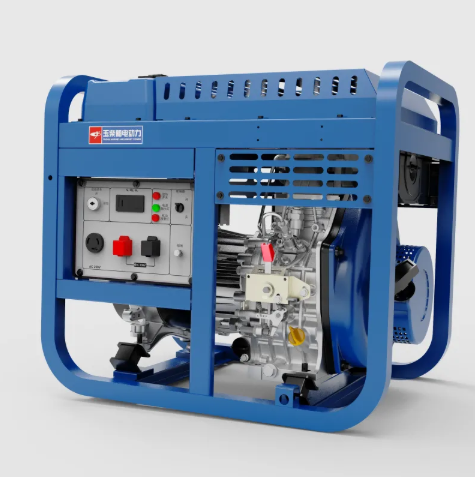Did you know that nearly 65% of diesel generator performance issues stem from improper installation? For facility managers, business owners, and maintenance teams undertaking their first Diesel Generator Set installation, the process can seem overwhelming. From foundation preparation to electrical connections, each step requires precision and expertise to ensure safety, reliability, and optimal performance. This comprehensive guide breaks down the installation process into manageable steps, providing expert guidance to help you successfully install your Diesel Generator Set while avoiding common pitfalls that could compromise your investment.
Pre-Installation Planning and Site Assessment
Critical Preliminary Considerations
Before unpacking your Diesel Generator Set, thorough planning ensures a smooth installation process:
Review local regulations: Permitting requirements vary by jurisdiction
Verify specifications: Ensure the generator matches your electrical requirements
Assemble necessary tools: Have all equipment ready before starting
Safety preparation: Obtain personal protective equipment (PPE) and safety gear
Site Selection Criteria
Choose a location that meets these essential requirements:
Adequate ventilation for cooling and combustion air
Proper drainage to prevent water accumulation
Accessibility for maintenance and service
Distance from structures meeting fire safety codes
Noise consideration for surrounding environments
Insert site assessment checklist: "Generator Installation Site Evaluation" - ALT text: diesel-generator-installation-site-assessment-guide
Foundation Requirements and Preparation
Concrete Foundation Specifications
A proper foundation is crucial for stability and vibration control:
Reinforced concrete pad: Minimum 4-6 inches thick with steel rebar
Size dimensions: Extend 6-12 inches beyond generator footprint
Level surface: Precision leveling to prevent operational issues
Curing time: Allow 7 days for proper concrete curing before installation
Installation Process
Excavate area to required depth and dimensions
Install formwork and reinforcement according to engineering specifications
Pour concrete and ensure proper consolidation
Install anchor bolts precisely aligned with generator mounting points
Finish surface with smooth troweling for optimal contact
Generator Placement and Mounting Procedures
Equipment Handling and Positioning
Use appropriate lifting equipment rated for generator weight
Position carefully aligning mounting points with anchor bolts
Install vibration isolators as specified by manufacturer
Secure with grade 8 hardware torqued to manufacturer specifications
Alignment and Leveling
Verify perfect level using precision leveling tools
Check alignment with adjacent structures and connections
Ensure adequate clearances for maintenance access
Confirm structural integrity before proceeding to connections
Electrical Connection and Transfer Switch Installation
Safety Protocols
Disconnect all power sources before beginning electrical work
Use lockout/tagout procedures to ensure worker safety
Verify voltage compatibility between generator and connected systems
Follow NEC guidelines and local electrical codes
Connection Steps
Install automatic transfer switch according to manufacturer instructions
Connect generator output to transfer switch input terminals
Wire control circuits for automatic operation and monitoring
Establish proper grounding meeting electrical code requirements
Install circuit protection devices as specified in design plans
Professional Diesel Generator Sets supplier organizations often provide certified electricians for complex electrical connections.
Fuel System Setup and Storage Solutions
Fuel Storage Options
Integrated base tanks: For generators under 1000 gallons capacity
External storage tanks: Require secondary containment and monitoring
Day tanks: Provide fuel polishing and emergency supply
Fuel transfer systems: Pumps, filters, and monitoring equipment
Installation Requirements
Position tanks according to NFPA and local fire codes
Install double-wall piping for environmental protection
Include filtration systems for fuel quality maintenance
Test for leaks using approved methods and documentation
Verify fuel quality before initial startup
Exhaust System Installation and Ventilation Requirements
Exhaust System Components
Flexible connectors to accommodate engine movement
Insulated piping for heat protection and efficiency
Weatherproof termination protecting against elements
Spark arrestors for installations in combustible environments
Safety Compliance
Maintain clearances from combustible materials
Install carbon monoxide detectors in enclosed spaces
Ensure proper slope for condensate drainage
Verify compliance with local environmental regulations
Control System Configuration and Testing
Control Panel Setup
Mount in accessible location protected from elements
Connect all sensors and monitoring devices
Program operating parameters for specific application needs
Set up communication protocols for remote monitoring
System Testing
Verify sensor accuracy and calibration
Test safety shutdown systems under controlled conditions
Confirm automatic sequencing with transfer switch
Validate alarm systems and notification functions
Insert control wiring diagram: "Generator Control System Schematic" - ALT text: diesel-generator-control-wiring-installation
Commissioning and Performance Verification
Pre-Startup Checklist
Verify all connections are secure and proper
Check fluid levels (oil, coolant, fuel)
Inspect battery charge and connections
Confirm safety devices are functional
Review installation documentation for completeness
Initial Startup Procedure
Start generator manually and monitor initial operation
Check for unusual noises or vibrations
Verify voltage and frequency output stability
Test automatic transfer functionality
Conduct load testing gradually increasing load
Performance Validation
Document performance data for future reference
Verify compliance with specifications and regulations
Complete commissioning report for warranty validation
Provide operator training on normal procedures
Maintenance Planning and Operational Guidelines
Preventive Maintenance Schedule
Daily checks: Fluid levels, leak inspection, general condition
Weekly testing: Exercise generator under load if possible
Monthly maintenance: Filter checks, battery testing, system verification
Annual service: Comprehensive inspection and parts replacement
Operational Best Practices
Maintain operating records including runtime and maintenance
Keep installation area clean and accessible
Monitor performance trends for early problem detection
Follow manufacturer recommendations for specific maintenance procedures
When to Consult Professional Installers
Complex Installation Scenarios
Seek professional assistance for:
Electrical utility interconnections and grid parallel operations
Large fuel storage systems with complex piping requirements
Multiple generator installations requiring synchronization
Critical facilities where reliability is paramount
Permitting challenges requiring professional engineering certification
Benefits of Professional Installation
Warranty protection through certified installation practices
Code compliance assurance avoiding regulatory issues
Optimized performance through expert system tuning
Safety compliance meeting all OSHA and industry standards
Long-term reliability from proper installation techniques
For immediate needs, many Diesel Generator Sets supplier companies maintain Diesel Generator Sets in stock with professional installation services available.
Conclusion and Next Steps
Proper Diesel Generator Set installation requires careful planning, attention to detail, and adherence to safety standards. While many aspects can be managed by competent maintenance teams, complex electrical and fuel system connections often benefit from professional expertise. Remember that proper installation not only ensures reliable operation but also maintains warranty coverage and compliance with insurance requirements.
Need Professional Installation Support? Our certified installation team has completed over 1,200 successful generator installations with perfect safety record. [Contact us today for a free installation assessment and professional quote]. Ensure your Diesel Generator Set is installed correctly and ready to provide reliable power when you need it most.
Table of Contents
- Pre-Installation Planning and Site Assessment
- Foundation Requirements and Preparation
- Generator Placement and Mounting Procedures
- Electrical Connection and Transfer Switch Installation
- Fuel System Setup and Storage Solutions
- Exhaust System Installation and Ventilation Requirements
- Control System Configuration and Testing
- Commissioning and Performance Verification
- Maintenance Planning and Operational Guidelines
- When to Consult Professional Installers
- Conclusion and Next Steps

